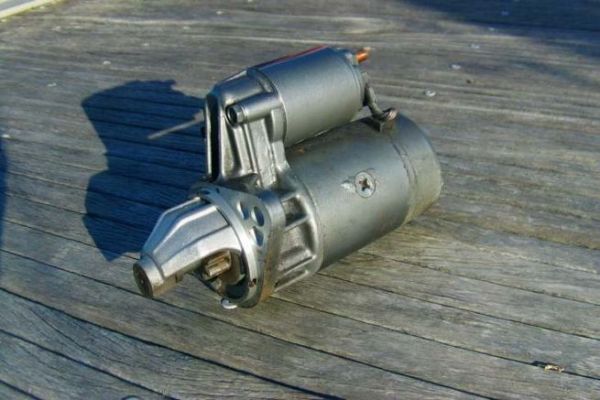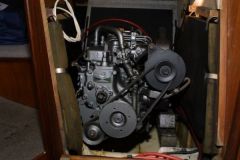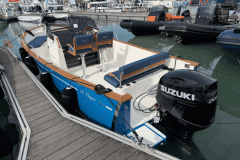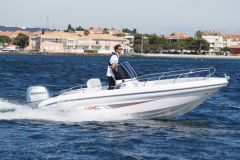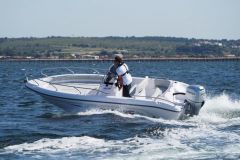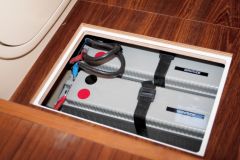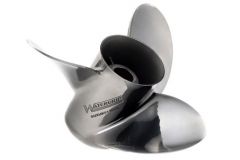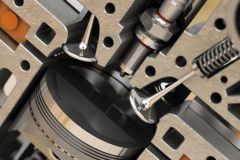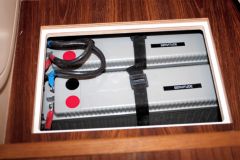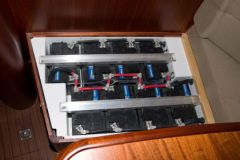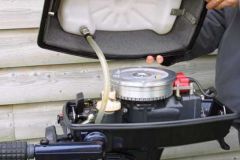A broken starter complicates life on board
Georges and Janine get acquainted with their new boat, the Croque soleil II . They have just convoyed the boat and have finally arrived at their anchorage. They're getting to know the boat's new equipment. They have to keep the batteries sufficiently charged, make sure they don't run out of fresh water, check that the safety equipment is operational and that the engine is always ready to start.
On the first morning after the delivery, the battery check shows that the evening's festivities have taken their toll. No problem, says Georges! By starting the engine, they'll recharge and he'll then be able to calculate his power consumption and adapt the system. He turns the key: click, click, click... The starter motor doesn't turn, the engine isn't running. Starter failure!
- Janine we're out of starter!
- Damn, and we still don't have any spare parts
- Yes, and if we have to take it to the mechanic, we won't have it before the end of the week.
- Okay, I'll go and see the neighbors in the dinghy, it seems to me that the catamaran told us last night that it had the same engine as us.
- Yes, maybe he'll have a spare starter!
Janine returns an hour later with a brand-new starter provided by a neighbor. A little mechanical work, and the engine should be able to restart. Janine gets to work: first, the batteries have to be switched off, as the high currents must not cause any sparks. Then all that's needed is to disconnect two electrical cables, and remove two fixing screws so that the motor can be removed. The most difficult part of this operation is accessibility. In just ten minutes, the starter motor is replaced, and it's time to start.
Georges operates the starter push-button. This energizes the solenoid coil, moves the plunger core and makes contact with the starter motor's power circuit. Simultaneously, the fork tilts and pushes the drive pinion, which engages the teeth of the flywheel. The engine turns, the piston compresses the air in the combustion chamber, the fuel is injected, and finally the explosion is created to drive the engine.
VRROOOUUUOMMMMM
The Croque Soleil II has a working engine again. Georges and Janine can continue to prepare their boat, so as to avoid any more surprises of this kind. They start by taking the starter motor to an electrician for overhaul, and order an extra one as a back-up.
Identifying starter failure
The function of the starter motor is to turn the engine so that it can start. But how do you know if it's the cause of the breakdown when an engine won't start?
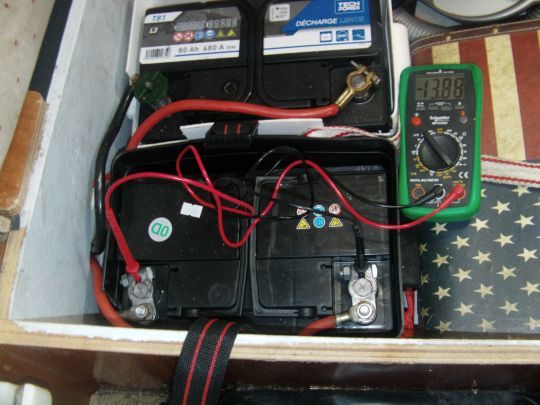
First, check the charge of the engine battery. A completely flat battery will not allow the motor to run. The voltage must be at least 12.6 V to ensure proper starting.
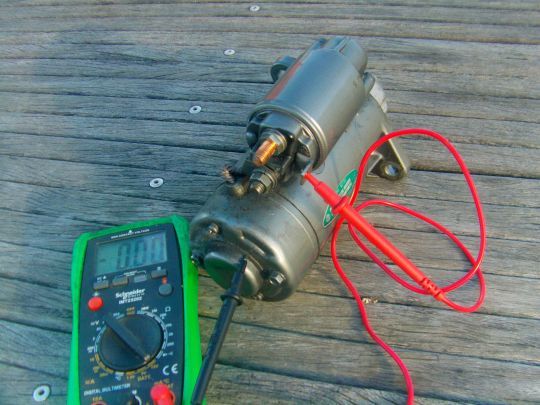
If the battery isn't to blame, and the engine still won't run when you turn the key, you need to check that the starter key is working properly before replacing the starter for nothing. To do this, use a multimeter to measure the voltage on the solenoid where the starter key is connected. To do this, set the multimeter to 12 V DC, and take the measurement as you start the engine. The meter's positive probe must be placed on the ignition key terminal, and the negative probe on a ground. You'll need two people to carry out this operation, and you'll need to be extremely careful with the motor's rotating parts. If the solenoid is supplied with 12 V and the engine still doesn't run, the starter must have failed.
Several starter components may be involved:
-
Blocked or burnt-out solenoid
-
Motor brushes too worn
-
Mechanical failure: sprocket, fork ...
However, these failures will require disassembly, and this can be complex. The easiest solution is to replace it.
Replacing a starter
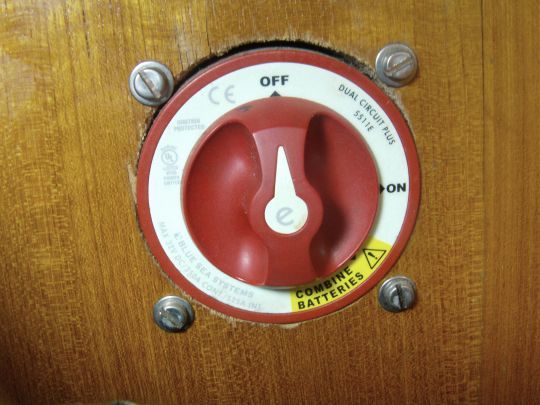
The batteries must first be disconnected, because when removing the power cable, contact with a ground will cause an electric arc. Next, disconnect the starter key cable from the solenoid, and the power cable from the battery. All that's left to do is loosen the fixing screws, and the starter motor can be removed.
Before reassembling the new starter, it's important to check that it's compatible with the engine. In particular, check that the starter pinion has exactly the same number of teeth. An unsuitable sprocket will damage the flywheel. This part is central to the motor's operation, and must not be damaged.
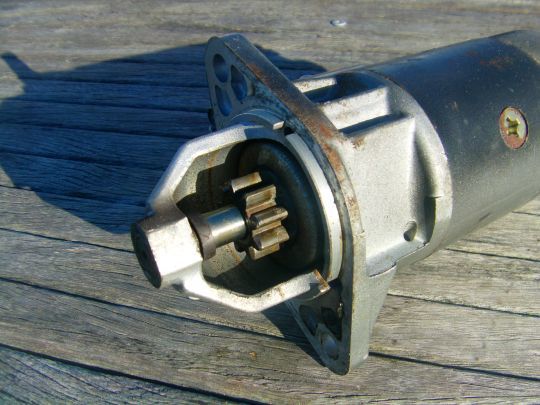
Anticipating starter failure
The most effective solution is to have an emergency starter, and to have trained yourself to replace it. Indeed, if a breakdown occurs at sea, you need to know exactly how to proceed in order to be as quick as possible, and to avoid mishandling the system: screwing in screws, breaking a terminal, etc.
What's more, if a starter shows signs of weakness: doesn't start on the first try, or makes an abnormal noise when starting, a service visit to a specialist workshop will help you prevent a breakdown at the worst possible moment.
This will give you the best chance of keeping your engine running under all circumstances.

 /
/ 